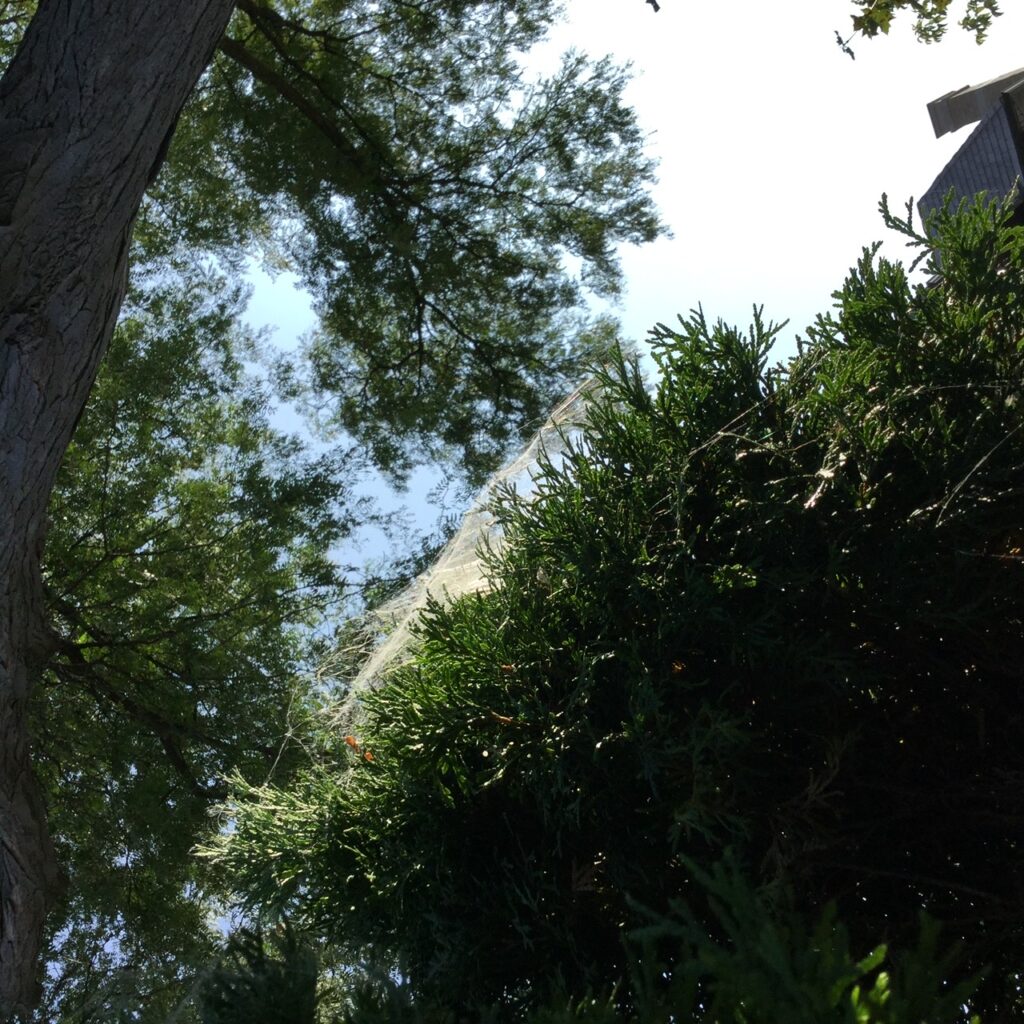
I live Near Bayview ave and Sheppard ave. 6 years ago we planted an emerald cedar hedge which is doing very well. However, this summer I noticed a silky web growing at the tops of the cedars. I sprayed Bug B Gone which seemed to work for a while, but then the webs returned. At the back of the hedge, there is a semi private hedge and over the hedge, there are tall honey locust trees.
My question is: what insect is creating these webs and do I need to spray an insecticide. If I do need to spray, what should I use?
Thanks
Thank you for contacting the Toronto Master Gardeners.
Without a close up of the insect it is difficult to say what could be causing the webs. The webs could simply caused by spiders which spin their webs in an ideal place to trap insects.
It could also be that the cobwebs are produced by small spiders which suggest mites are the culprit. Spruce spider mites, Oligonychus ununguis, and red spider mites feed on the needles of arborvitae causing them to turn gray or brown. They can be detected by the webs that they spin over the branches. Their piercing-sucking mouth parts enable them to suck the juice from the foliage. Have you noticed theat the outer needles in the area have been turning brown?
Light infestations can be taken care of by spraying plants with a forceful stream of water including the underside of the foliage. Do this every day for three days. If mites continue to be a problem, spray with insecticidal soap every three to five days for two weeks in order to interrupt the cycle of eggs hatching. It is advisable to spray the soil as well as the plant.
Good cultural practices include planting in full sun or at least partial shade, and providing plenty of moisture during the growing season. Concentrate on watering the roots with a deep watering once a week . You should not be watering daily. Apply a mulch of compost or other organic material to help retain moisture as well as feeding the plant but keep the mulch several inches away from the trunk.
There is a welth of information on our website on Emerald Cedars. Simply type “Emeralld Cedar” in the FIND IT HERE located on the right side of the page.
Good Luck with your cedars.

